I needed a weeding platform for the hoop houses so I could weed the vegetable beds without stepping in them. I had ten foot alder branches, so I cut some down to five and a half feet, stripped them and ripped one in two.


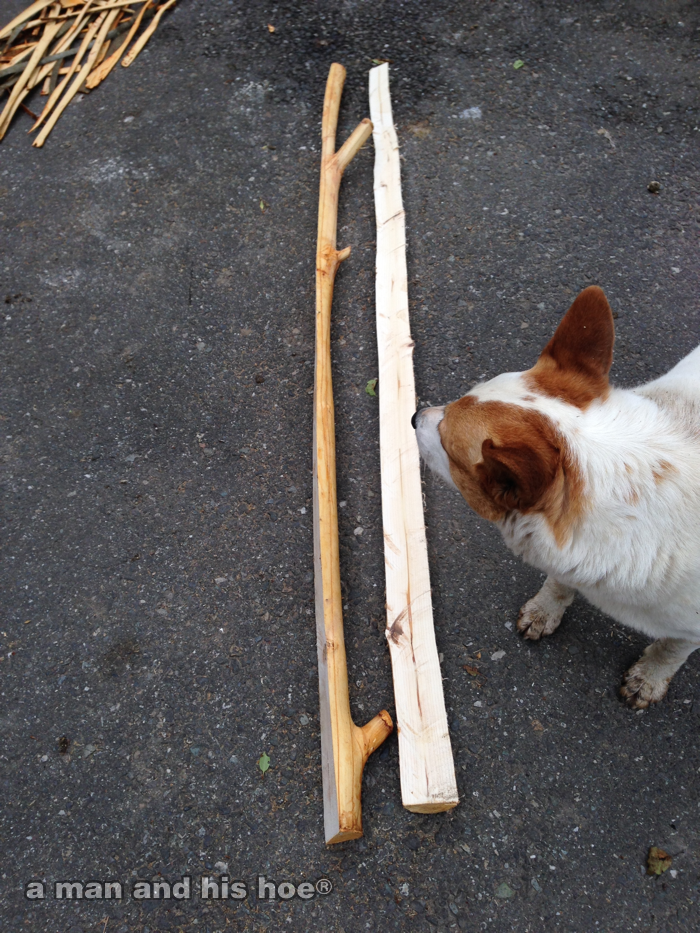

I also had a pallet lid with decent planks. I took the lid apart and used the blanks to make the platform.

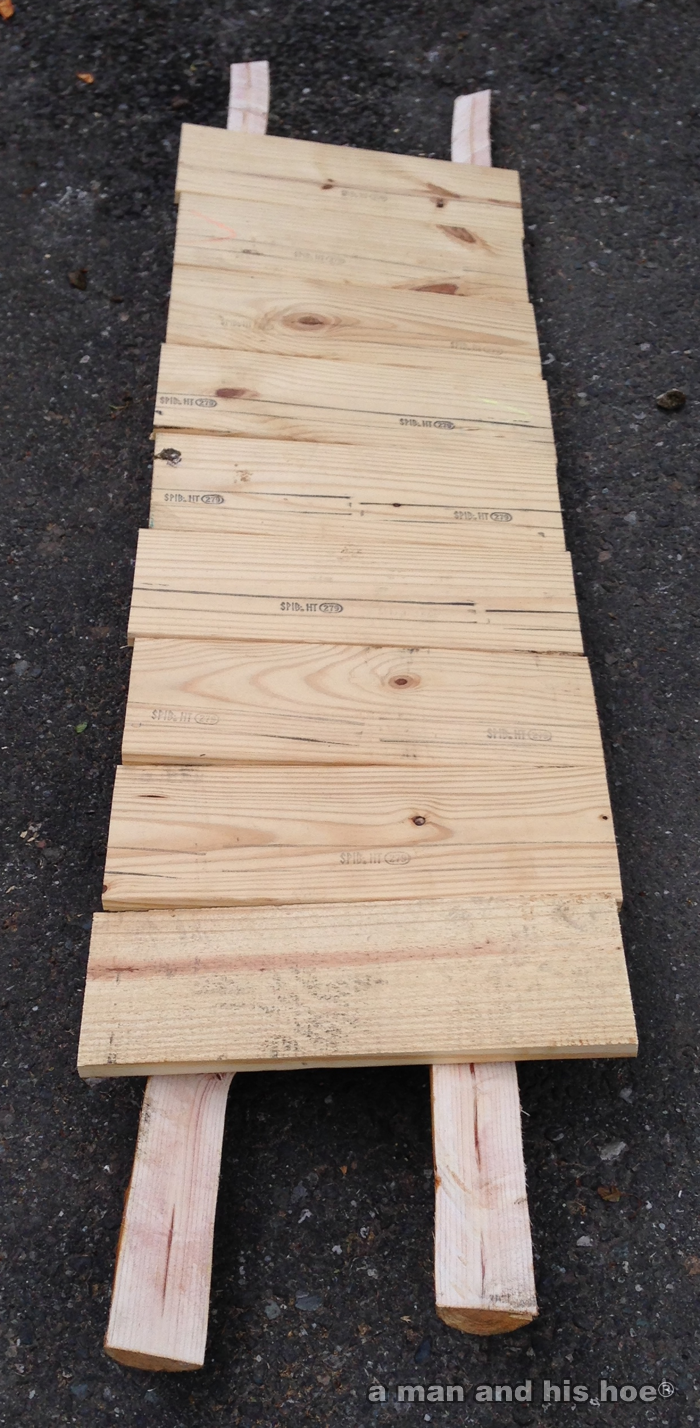
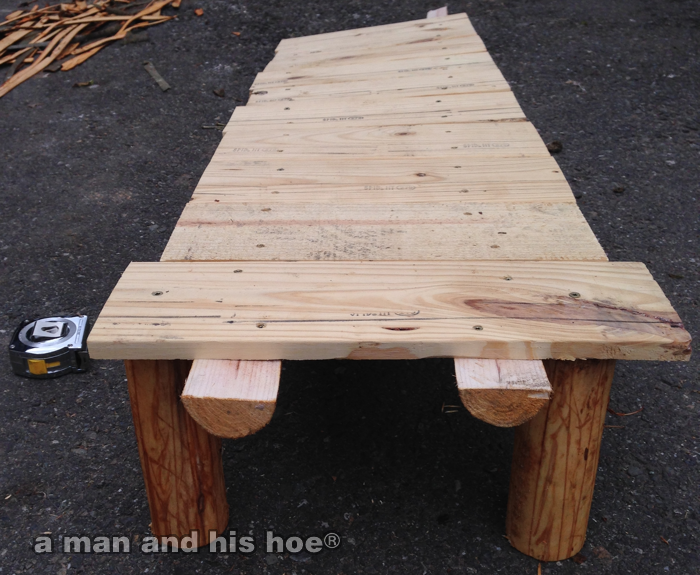
I used sections of the alder branches to make the legs for one side of the weeding platform.
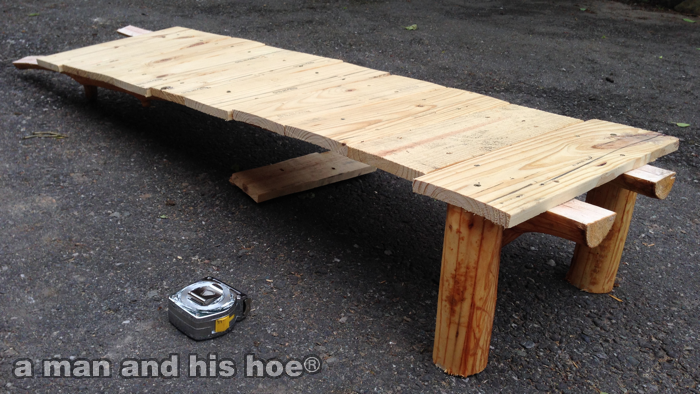
Here is how the weeding platform works. The end without the legs rests on the frame of the hoop house. The end with the legs sits out in the middle of the hoop house. And I use the platform to kneel on to weed the vegetable rows. The weeding platform is easy to move and now I can tend to the rows of vegetables without having to step on the soft dirt and compacting it or stepping on the plants.
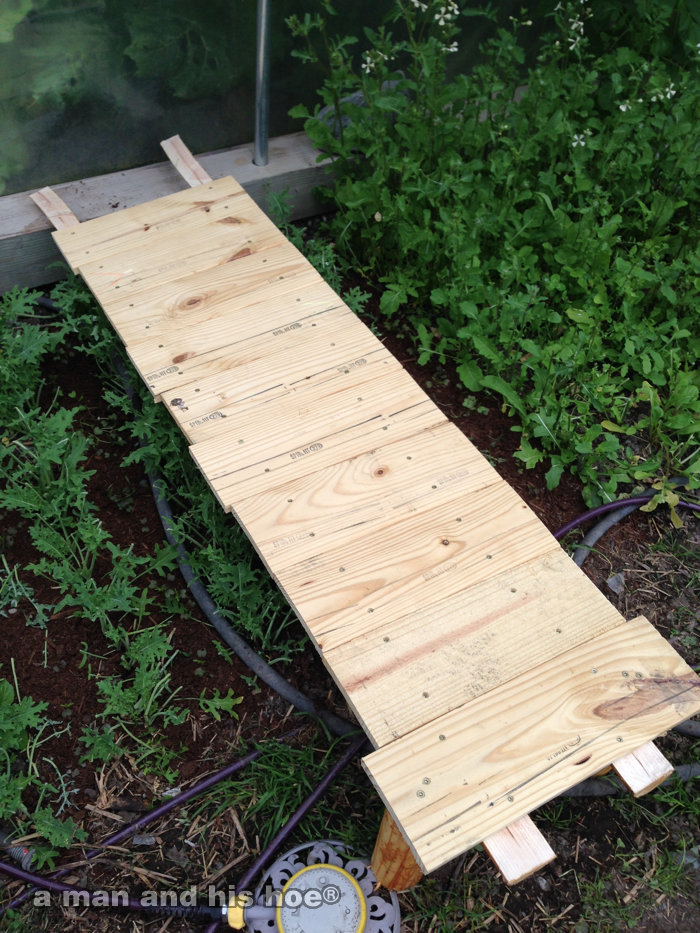
Category: Reflections
-
Reuse, Recycle
-
Harvard Study Linking Bee Colony Collapse Disorder to Neonicotinoid Pesticides
In this article of the Bulletin of Insectology, Chensheng Lu, Associate Professor of Environmental Exposure Biology at Harvard, describes a study he conducted testing the effect of neonicotinoid pesticides on bee colonies.
In the study, they compared bee colonies which were given exposure to neonicotinoid pesticides to bee colonies which were not exposed. The study started in July and after a winter, the colonies treated with neonicotinoid pesticides had significant colony collapse disorder, while the non-treated colonies did not.
Upon close examination of colonies in early April 2013, we found that the majority of bees in all neonicotinoid-treated colonies, regardless of whether they survived or not, had abandoned their hives during the course of winter. However, we observed a complete opposite phenomenon in the control colonies in which instead of abandonment, hives were repopulated quickly with new emerging bees.
Neonicotinoids are banned in Europe. Hopefully, with more studies like this, showing the dangers of these pesticides, they will be banner in the US as well.
- Scientists May Have Finally Pinpointed What’s Killing All The Honeybees ~ Dina Spector, Business Insider
- Honeybees abandoning hives and dying due to insecticide use, research finds ~ Damian Carrington, The Guardian
- The Cause Of Colony Collapse Disorder, Disappearing Bees Becoming More Clear
~ Eric Mack, Forbes
-
Iris on the Verge
The iris by the pond are on the verge of unfolding. The thick vegetation along the banks of the pond is a perfect home for garden snakes, a playground for the dogs, and a foraging garden for the chickens.


-
Bring Out the Cannon to Shoot the Sparrows
Curious as to the sculptor and the actual sculpture I saw at the Hakone Open-Air Museum back in my college days, I sent a query to the museum describing the sculpture. A short time ago I got a reply from the museum. The sculpture is now at their sister open-air museum, The Utuskushigahara Open-Air Museum in Nagano prefecture in Japan. The links are in Japanese, but they have plenty of pictures to give you an idea of the beautiful, mountainous area. Below is a picture of that sculpture.
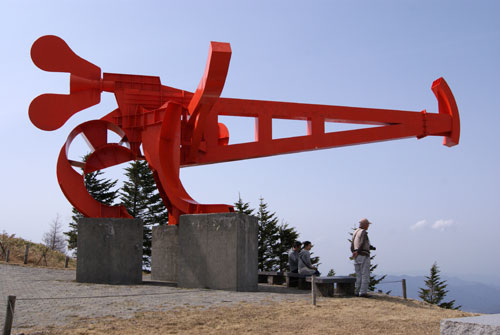
The sculpture is by the Swiss artist Bernhard Luginbühl and is titled スズメヲウツノニタイホウヲモチダス Suzume wo utsu noni taihou wo mochidasu, which translates to Bring out the cannon to shoot the sparrow. He created many huge, fantastical pieces. Take a look at the Iron Giants’ Garden, a park in Mötschwil, canton Bern, Switzerland, that has a collection of his work. And below are images of some of his works. The world has an endless supply of interesting, creative people.
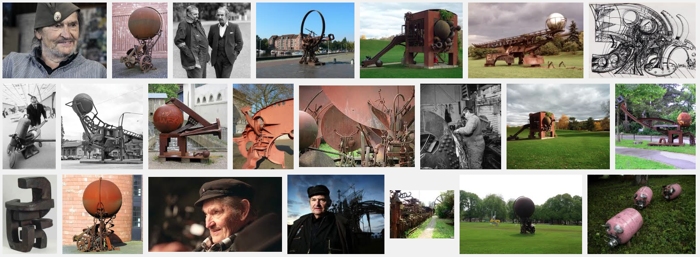
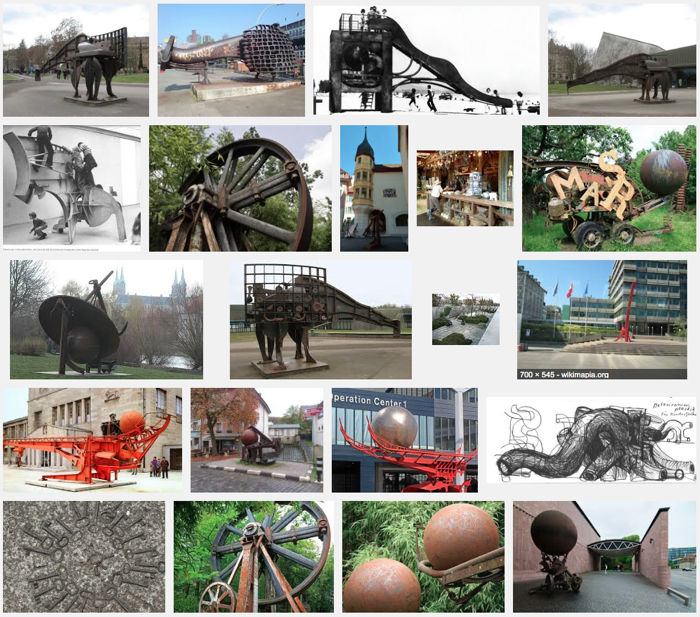
-
Living Sculpture
The Hakone Open-Air Museum is an amazing outdoor museum in Hakone, Japan. Located up in the hills, you take a cog-wheel tram which climbs steeply through a lush, narrow canyon up to the town of Hakone. The tram starts at sea level in the town of Odawara and by the time you reach the stop for the museum, you are at an elevation of 1,768 feet or 539 meters.
Decades ago, when I visited the museum for the first time back in my college days, there was one piece that really made an impression. I don’t recall the artist or the exact title, but it was a metal piece that looked like a massive crane pointing down at you. It may have been twenty of thirty feet tall, and the description was something like “A gun to shoot sparrows” (Found it!).
There are a few outdoor scupltures here at a man and his hoe®, but the sculptures that really impress are the ones nature creates. These are the living sculptures. The ones that change day by day, hour by hour, minute by minute, second by second. Truly amazing shapes of all sizes, colors, and textures.
What is remarkable is that many of these are edible. The great thing about being able to pick your food while you make your meal, is that when you sit down to eat the salad or dish you prepared, you can picture the beautiful setting where that onion or lettuce or cucumber or cherry or apple came from. You can remember all the shapes that fruit morphed through, from bud to flower to green fruit to ripened fruit. It adds another dimension to your eating pleasure. Gathering your food becomes an integral part of the recipe. It is like the sensations you feel while you knead the dough, or rub spices into your food.

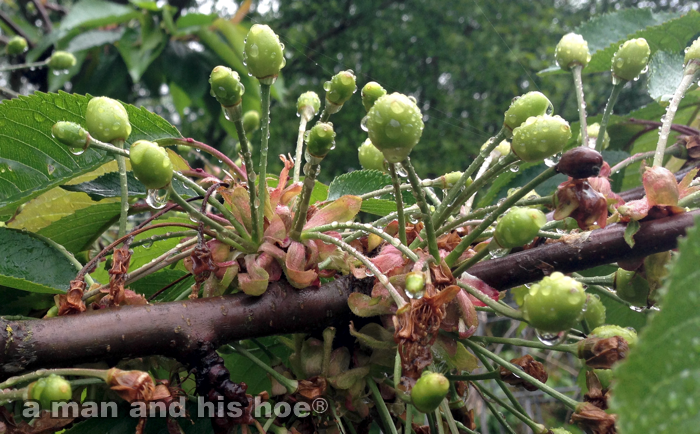




A great meal is much more than just sitting down at the table and eating what is in front of you. It starts with collecting the food in the first place. Pushing a cart through a supermarket and heaping it full of produce creates a much different meal experience than going out into the garden and selecting the ingredients for your meal.
It’s frightening how disconnected many people are from nature when we humans are so dependent on other organisms. We can’t survive if the ants and bees and earthworms can’t thrive. We are dependent on chickens and cows shitting to nourish the plants and grains we eat. Our lives depend on the ocean being healthy, even if we live thousands of miles from the nearest beach. There are a million billion trillion intricate interdependencies among bacteria, fungi, mosses, plants, and animals that make our lives possible. The most important thing we humans can do for ourselves, is to protect nature.